

Buy the DVD
e-Newsletter
FAQs
Contact Us
Site Map

|
 |


Follow the links to watch series excerpts and Web-exclusive videos or embed them on your site.

In Sickness and In Wealth
-
Health in America (Excerpt)
 Watch » Watch »VIDEO EXCERPT, Unnatural Causes - Episode 1
The U.S. is one of the richest countries in the world, yet we rank 29th for life expectancy. We spent more than twice what other countries spend per capita on health care. Why aren't we healthier?
-
Louisville's Rubbertown Neighborhood Fights against Toxic Emissions (Web-exclusive)
 Watch » Watch » Eboni Cochran and her neighbors in Louisville have organized to demand that chemical companies in their area do a better job of monitoring and containing hazardous materials that seep into the soil and air. Across the country, polluting industries are concentrated in communities where the poor and people of color live.
-
There's No Such Thing as Small Stuff: Being Poor in Louisville (Web-exclusive)
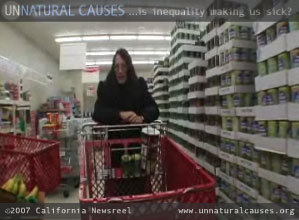 Watch » Watch »Mary Turner, featured in "In Sickness and In Wealth," lives in a poor neighborhood of Louisville, KY. With three teenage children, a husband on disability, and health complications that prevent her from working, Mary must budget carefully to keep her family fed and housed. In this video, she discusses the choices she faces every day, quickly but eloquently presenting a glimpse of one woman's life at the lower end of the U.S. socio-economic spectrum.
When the Bough Breaks
-
Kim Anderson's Story (Excerpt)
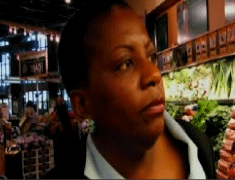 Watch » Watch » When Atlanta lawyer Kim Anderson was pregnant with her first child, she did everything right: she ate a healthy diet, exercised, and got the best prenatal care. But her baby was born almost three months premature. This excerpt from When the Bough Breaks explores racism's impact on pregnancy outcomes.
-
How Racism Impacts Pregnancy Outcomes (Web exclusive)
 Watch » Watch »UCLA obstetrician and gynecologist Dr. Michael Lu believes that for many women of color, racism over a life time, not just during the nine months of pregnancy, increases the risk of preterm delivery. To improve birth outcomes, Lu argues, we must address the conditions that impact women's health not just when they become pregnant but from childhood, adolescence and into adulthood.
-
Unraveling the Mystery of Black-White Differences in Infant Mortality (Web exclusive)
 Watch » Watch »Neonatologists James Collins and Richard David specialize in the care of infants born too soon or too small. Their research on differences in birth outcomes between African American and white American women points to a provocative idea: the cumulative stress of racism is taking a toll on African American families even before they are born.
Bad Sugar
-
Water Rights and Diabetes in Arizona (Excerpt)
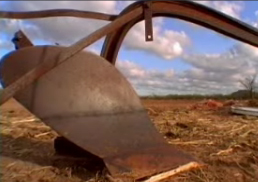 Watch » Watch »The Tohono O'odham and Pima Indians of southern Arizona have perhaps the highest rate of diabetes in the world. Yet the disease was virtually unknown here 100 years ago. Over the last century, the diversion of river water to upstream white settlements cost the O'odham their crops, livelihood, traditional diet, culture and health. Today, community advocates hope that restoring water and renewing culture can help improve health.
-
Cultural Loss - Impact on Native American Health (Web exclusive)
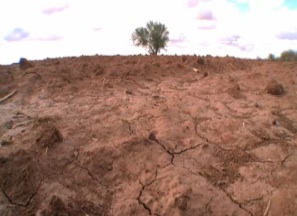 Watch » Watch »Dr. Donald Warne talks about how cultural loss impacts the health of Native American tribes in Arizona. The damming of rivers plunged local tribes into poverty, dependence and ultimately poor health. Deprived of their language, land, livelihood and traditions, many Native Americans have developed a fatalistic view about diseases like diabetes.
-
Culture of Diabetes - Native Americans and Futurelessness(Web exclusive)
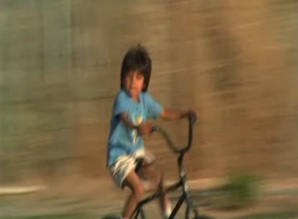 Watch » Watch »In some Native American communities, diabetes is so common that people grow up feeling that it is in some ways, inevitable. "I don't have diabetes yet," is what Dr. Warne often hears from his patients. Yet hope for the future is an important factor in preventing and controlling diabetes - something health care practitioners need to take into account when treating patients.
-
Diabetes among Native Americans - Genes or Environment? (Web exclusive)
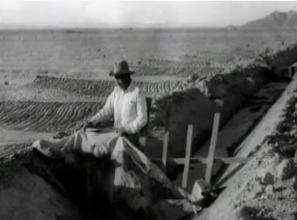 Watch » Watch »The U.S. government has spent hundreds of millions of dollars over the past 40 years trying to uncover a biological explanation for why the Pima Indians of southern Arizona have one of the highest rates of diabetes in the world. But as Dr. Donald Warne tells us, diabetes was extremely rare here 100 years ago. What's changed? Not biology but environment.
-
Diabetes Industry and Native American Health(Web exclusive)
 Watch » Watch »Competing agendas drive the distribution of resources when it comes to diabetes care and prevention. We spend most of our dollars on late-stage care, which not coincidentally is highly profitable to companies that provide those services. To reduce diabetes rates among Native Americans and other populations, we have to advocate for policies that will invest more resources in primary prevention and underlying social conditions.
-
Federal Indian Policies and Health (Web exclusive)
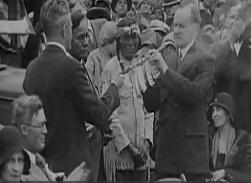 Watch » Watch »Historically, federal Indian policies have been destructive to Native American communities - ranging from removal to assimilation and termination. These policies have had a negative impact on health and health-related behaviors. More recent trends towards self-determination and tribal control provide reason to hope.
-
Gardening as Cultural Renewal - the Gila Crossing School Program (Web exclusive)
 Watch » Watch »The Gila Crossing Elementary School in southern Arizona was once operated by the Bureau of Indian Affairs. When the local tribe took it over, community members created a gardening program to teach children about their cultural heritage as farmers, to encourage healthy eating, and to foster their development and future interest in agriculture.
-
Impact of Poverty and Stress on Diabetes among Native Americans (Web exclusive)
 Watch » Watch »As Dr. Donald Warne explains, there is a direct biochemical connection between living in poverty and blood sugar levels. The stress of being poor and of having family members die young creates a complicated web of cultural values and beliefs that make controlling diabetes more difficult. Add to that the lack of availability of healthy food and it's no wonder diabetes rates are high.
-
Importance of Culturally Appropriate Care for Native Americans (Web exclusive)
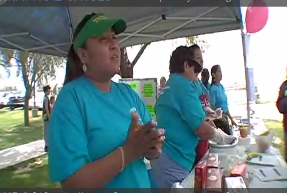 Watch » Watch »Modern medicine teaches a rigid, scientific approach to disease prevention. Yet practitioners like Dr. Donald Warne argue that to be effective, health care programs must be locally controlled and responsive to the needs and beliefs of diverse individuals and groups. For Native Americans in particular, role models and interventions must come from within the community.
-
Native American Treaties and Health Care (Web exclusive)
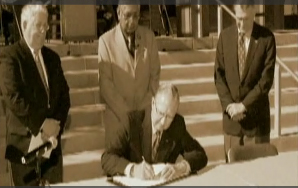 Watch » Watch »Dr. Donald Warne explains that Native Americans are the only U.S. group born with a legal right to health care. Historically, however, American Indian health care programs have been inadequately funded, especially compared with other federally subsidized health care.
-
Tohono O'odham Community Action (TOCA) - Cultural Renewal to Improve Health (Web exclusive)
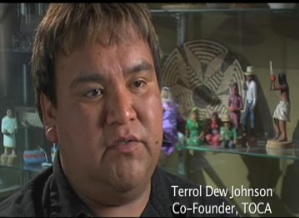 Watch » Watch »Terrol Dew Johnson, featured in the "Bad Sugar" segment of UNNATURAL CAUSES, is co-founder of TOCA, a community-based organization focused on cultural renewal as key to empowerment and better health. TOCA has four primary program areas: basketweaving, traditional foods, youth/elder outreach and traditional arts and culture. www.tocaonline.org
Place Matters
-
Living in Disadvantaged Neighborhoods is Bad for Your Health (Excerpt)
 Watch » Watch »Why is your street address such a good predictor of your health? Increasingly, Southeast Asian immigrants like Gwai Boonkeut are moving into neglected urban neighborhoods where African Americans have long suffered, and now their health is being eroded too. What can be done to create a neighborhood that promotes rather than destroys health?
-
Richmond California Struggles for Clean Air (Web exclusive)
 Watch » Watch »Community activist Torm Nompraseurt leads a "toxic tour" of Richmond, California where high levels of industrial pollution are wreaking havoc on the health and wellbeing of residents.
-
Youth Empowerment Strategies (YES!) Anti-Violence Program in Richmond, California (Web exclusive)
 Watch » Watch »Learn more about YES! - the after-school youth anti-violence program featured in "Place Matters."
Collateral Damage
-
Marshallese Displaced from Home Islands after U.S. Nuclear Testing (Excerpt)
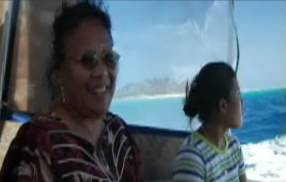 Watch » Watch »Dise Langrus is one of many Marshallese who were relocated from their home islands 40 years ago after U.S. nuclear testing rendered it uninhabitable. Others were moved to make room for the construction of the U.S. military base on Kwajalein Island. Today, the Marshallese confront the worst of the "developing" and urbanized worlds: infectious disease running rampant because of poverty and squalid conditions and chronic illnesses resulting in part from the stress of dislocation and cultural loss.
-
Atomic Testing in the Marshall Islands(Web exclusive)
 Watch » Watch »Between 1946 and 1958, the U.S. detonated 67 nuclear devices in and around the Marshall Islands. The impact of these tests on the Marshallese people was profound - in terms of both actual radioactive exposure and the displacement of people from their home islands due to contamination and to accommodate the U.S. military.
-
Diabetes in the Marshall Islands(Web exclusive)
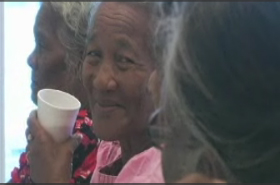 Watch » Watch »Their traditional diet and way of life disrupted by globalization and the American military presence in the equatorial Pacific, Marshall Islanders now struggle with high rates of diabetes, among other health problems.
|



